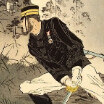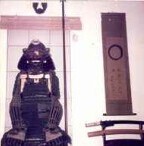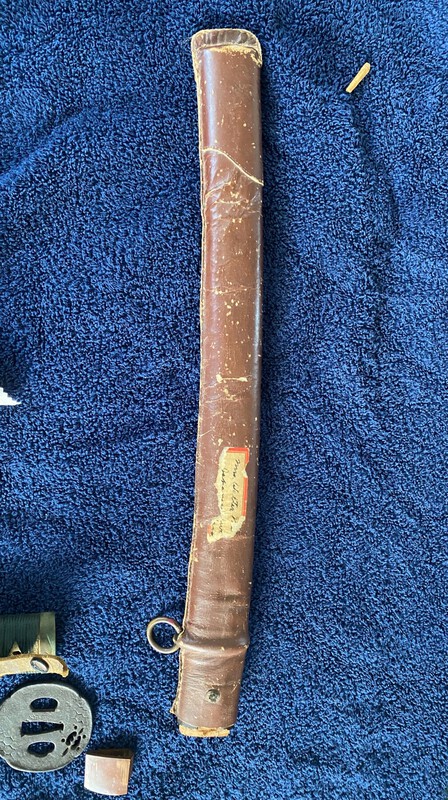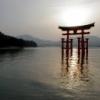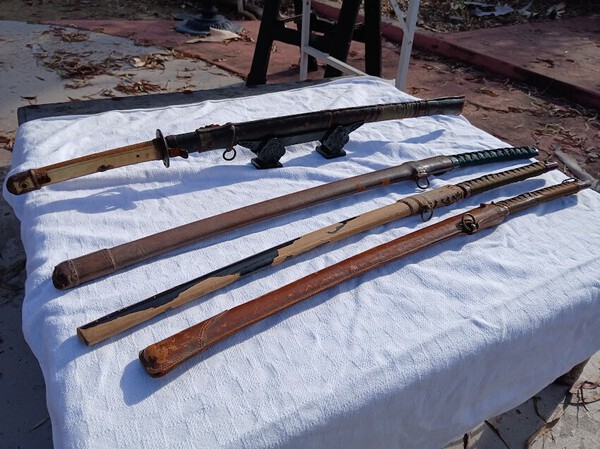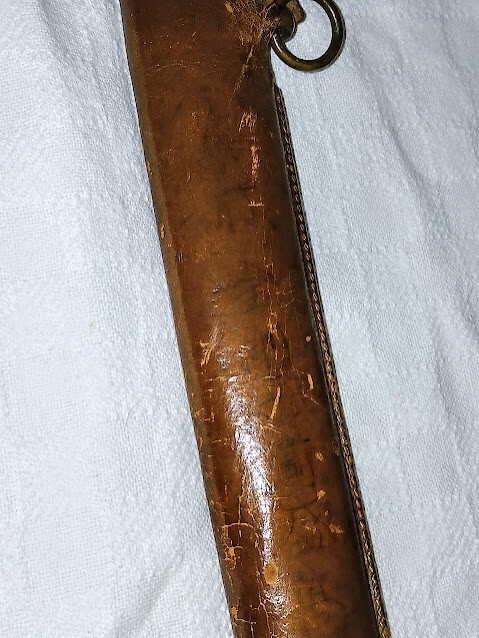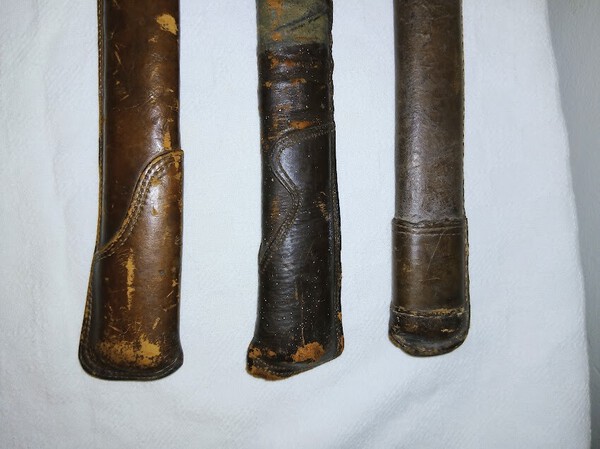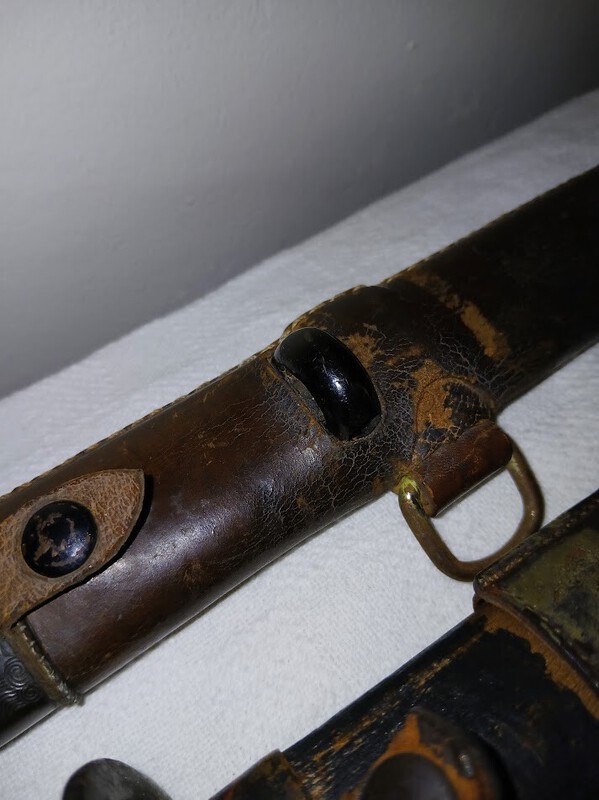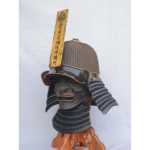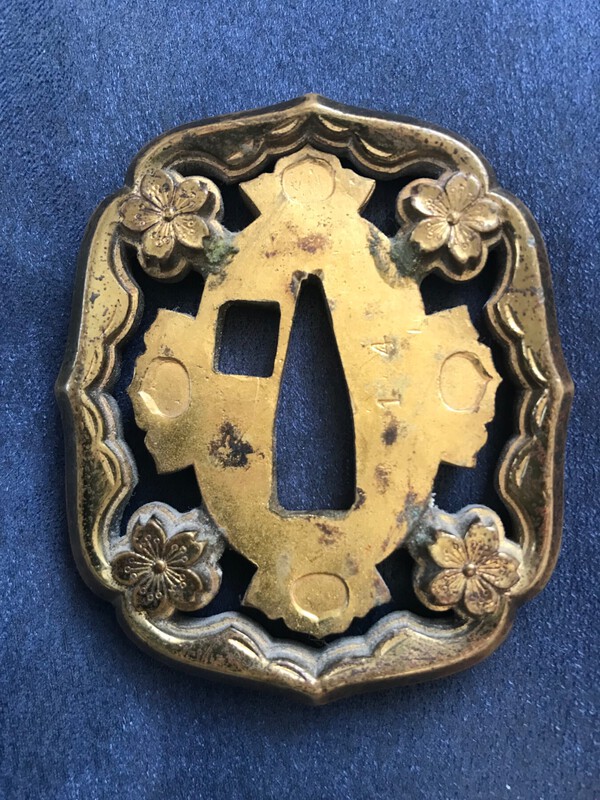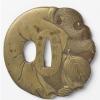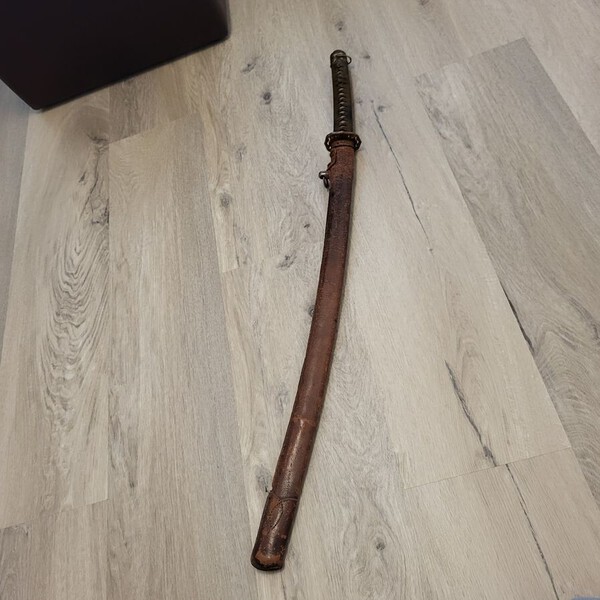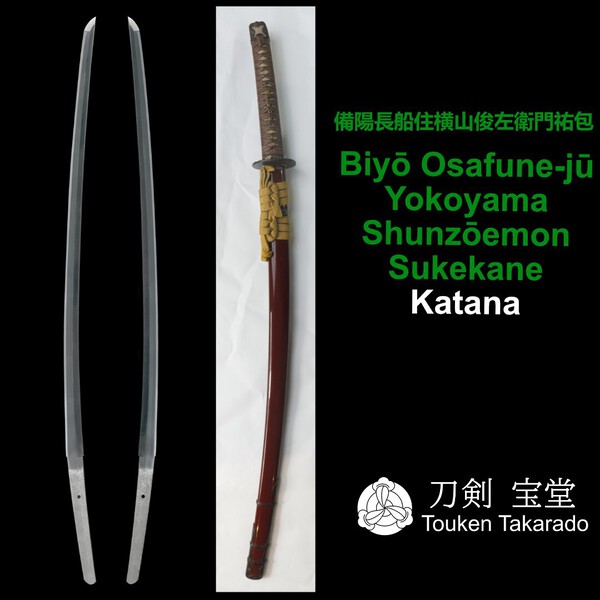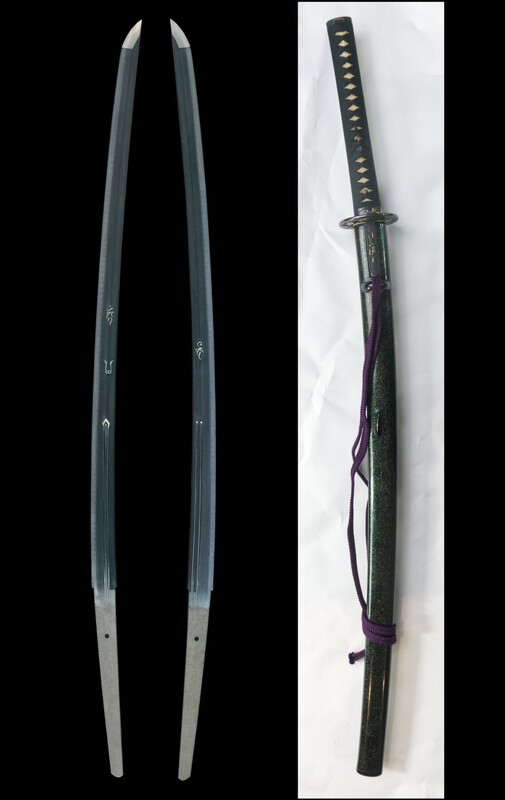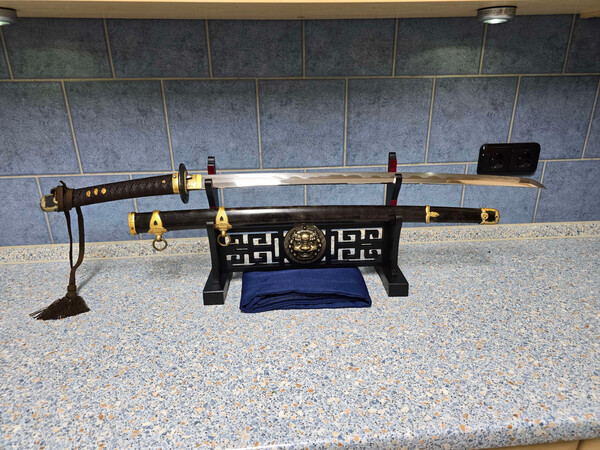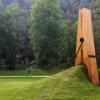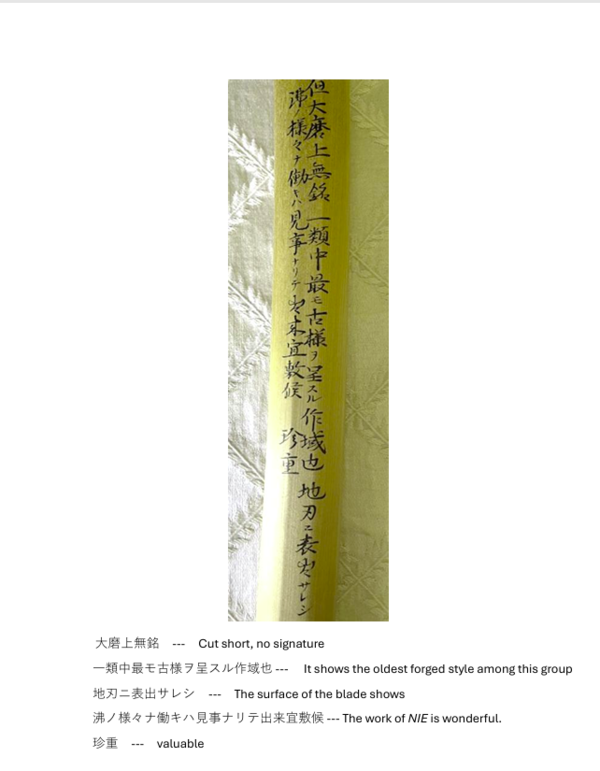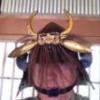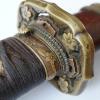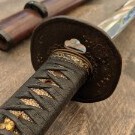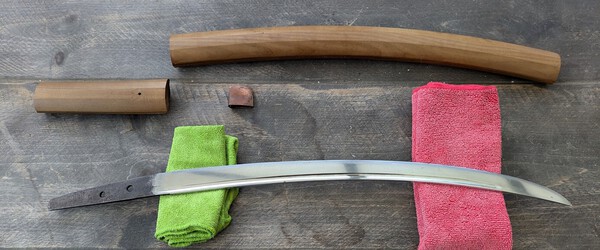Leaderboard
Popular Content
Showing content with the highest reputation on 07/20/2025 in all areas
-
7 points
-
Hi Sebastian and Ray. Thank you Ray for the comment. I am Julien, Patrice's successor (whom I know well). I do not know where that description come from, it is most likely a bug... ! As an introduction, I am a french dealer and expert in Oriental and Asian weapons (registered in a french expert chamber...). Nihonto are not my primary speciality but I do have knowledge in the field and I am working on it with zeal (but yet... I will never tell you I have the knowledge of Ray). I also work in African art, that is right. Anyway, if you have any question, feel free to contact me, and Sebastian, if you ever more details, do not hesitate to send me a PM ! Enjoy your day, Julien6 points
-
5 points
-
Blade is 1st Generation Chounsai Tsunatoshi. It has some remarkable provenance which will be saved for a comprehensive article in the not too distant future.5 points
-
I have an Ichijo shakudo tsuba where the nakago-ana has been completely retro-fitted, probably some time after initial manufacture. You can see in the angled pictures that the alloy used is a slightly different colour than the black/blue of the tsuba. It's an extreme conversion and shows that the piece was important to someone but as to why it was done, your guess is as good as mine. Best, Tom5 points
-
5 points
-
5 points
-
Calm down folks. Julien is nice enough to to engage here, that is more than many are willing to do, and the fact that Ray vouches for him says a lot in my mind. This isn't a witch hunt. Let's be polite, and maybe if you have questions, direct message or email is best. If you choose to post here, I'll be watching for rudeness or confrontation. I prefer dealers/sellers feel welcome enough to post here. Thanks for posting Julien and all the best.4 points
-
4 points
-
Julien is a friend and knowledgeable in our area of study. The bio above is not very comprehensive, and his background is broader than what is indicated there.4 points
-
4 points
-
Here are mine. I have a few more photos in my Google Album, be warned though the photos aren't that good. Also the one with most of the cover missing (third one down) is canvas. https://photos.app.goo.gl/wzz8yGffcZ1FUp4V9 It's not uncommon to find a cover with the soldier's name or a patriotic slogan written on it. One with a kurikata and hanger. Variations of the scabbard "drag".4 points
-
I can't believe this thread is 12 years old this month. It's epic and still relevant. No winners No losers. Mark4 points
-
4 points
-
3 points
-
3 points
-
Thank you Dale! Yes indeed , it is a very specific tsuba for a very specific polearm... let us discover what kind of yari will fit it ! As a matter of fact such unusual nakago ana have been discussed in this thread:3 points
-
3 points
-
Bruno, drifting off the topic but have you seen this? https://www.jauce.com/auction/b1190180124 Suitable for a trident !!3 points
-
The black steel tsuba appear in numerous serial ranges. It’s a misconception that these tsuba are later production than the brass ones. Also when swords were refurbished during the war, parts including the tsuba were replaced.3 points
-
3 points
-
New Additions – A Month of Bizen-den at Touken Takarado We're excited to share four newly listed swords now available on our website. This month carries a distinct Bizen flavor, with three of the four works forged in the revered Bizen tradition—including two Shinshinto-era blades and one exceptional Koto period katana from the Den Iwato Ichimonji lineage, designated Juyo Token. Newly Added to Inventory: Den Iwato Ichimonji Katana – Juyo Token A powerful and dignified Koto-era work by the enigmatic Den Iwato Ichimonji school. A rare opportunity to acquire a Juyo-class piece. https://www.toukentakarado.com/item-tk017-juyo-den-iwato-ichimonji Izumo Daijō Fujiwara Yoshitake Wakizashi A dynamic Shinshinto blade with a vigorous jigane and an energetic midare hamon, showing strong Horikawa influences. https://www.toukentakarado.com/item-tk016-izumo-daijo-fujiwara-yoshitake Biyō Osafune-jū Yokoyama Shunzōemon Sukekane Katana A finely crafted Shinshinto katana by the Yokoyama school, descended from the famed Osafune lineage. Robust and elegant workmanship. https://www.toukentakarado.com/item-tk015-yokoyama-sukekane Kuwana-jū Gisen-sai Mishina Hiromichi Katana A beautifully forged katana from the Mishina tradition, showcasing the regional style of Ise/Kuwana. https://www.toukentakarado.com/item-tk014-kuwana-mishina-hisamichi We invite you to explore these new listings and welcome any inquiries or questions you may have. Best Regards, Nicholas Fu Touken Takarado2 points
-
Hello everyone, I'd like to share my excitement with you. My first traditionally forged sword! Since I'm relatively new to this hobby, it's a very special thing for me. The Sword itself was shipped from Japan including NBTHK documents. Details about the blade: Early Edo period, around 1659 Blade length: approx. 68 cm Origin: Kaga-Sagami Province Sword is not singned Unfortunately, I couldn't find much information about the family crest.2 points
-
Bruce. From China? I'd be willing to bet they are 'new' repros and the numbered one with paint remnants has been put in the bunch to attract attention. Having said that, they are what they are and if a person needed one then they are a great option because a genuine one will almost never surface.2 points
-
Wow, 2 of the fold-over flaps in one day! I also like the metal drag protector. Seen that once before, but rare.2 points
-
thank you Ed yes unusally long (69,9 cm) for a Yasukuni shrine sword interesting topic !2 points
-
I was just informed that my export permit was approved! It took 5 weeks. I expect it will be another 2 weeks before I receive it.2 points
-
2 points
-
2 points
-
I don't think its irrelevant to know what an original looks,(unless you already know everything you need to know, to recognize what fake is, even a fake is well made. In my humble experience, you learn best, when you can compare with good originals.2 points
-
If Koshiyama is the correct reading of his family name 越山, it means '(Mr) Koshiyama placed the order for this' or (Mr, etc.) 'Koshiyama requested/ordered this'. Motomu is from the verb motomeru, 'look for' 'ask for' or 'want', and kore is 'this'. At the request of (Mr) Koshiyama2 points
-
2 points
-
2 points
-
Quick get your wallets out! https://www.ebay.com.au/itm/226875719520 or https://www.ebay.com.au/itm/226875705267 US $329.99 ApproximatelyAU $506.97 Or https://jp.mercari.com/item/m23105341320 USD$ $23.90 Seems a large price difference? Well factor in the shipping cost for in excess of 1.5 kg of iron! What both sites fail to reveal is the size of this "Edo Period Antique" (Age: 1800-1849) - around 30cm or just under a foot in height, the fact that it is a wall hanging "object" is not mentioned and no view of the ura is shown either - and why don't they know which way up a tsuba should be seen? Still they did go to the trouble of removing all the factory applied patina to reveal the "silver" colour! [Oh and that is the strangest "Crane" I have ever seen!]1 point
-
Wow, Sam, those look legit! One actually has a serial number and old paint. Just goes to show not everything coming out of China is reproduction. Tempted to buy those if no one else does. T (is that what you go by?) I don't know anything about 3D printing, but seem like a tough task when you consider all the curves in that part. I'd go for the ebay sale that Sam posted, if it were me. If you still want measurements, I can post some, though. Also would like to see the serial number and stamps. Don't know if they varied, but it might be important to know if it's a Tokyo blade or Nagoya. Their koiguchi might not be the same.1 point
-
Another more recent thread with plenty of weird nakago ana , the vas majority of them found by Dale (@ Spartancrest):1 point
-
Going way back to Posted March 6, 2023 This has just come up https://www.jauce.com/auction/s1098914034 Well I now know what my example originally looked like - I wonder what happened to the frame on mine?1 point
-
At the next San Francisco Japanese Sword show, on 8/1,2,3/2025, I will be selling a Tachi. This is Yamato Tegai, mumei, o-suriage, and Kamakura period (so I believe), Tokubetsu-Hozon-to. Photo below. The sayagaki was done by Mr. Tanobe. Attached below. Please join me at my table at the upcoming San Francisco show. San Francisco Show details below https://nihonto.com/35th-annual-san-francisco-Japanese-sword-show/ 手掻鞘書きとその訳.pdf1 point
-
1 point
-
Hoshi, thank you for this great article. I especially appreciated the detailed reviews of individual blades. The Bizen Osafune school is especially interesting to me, and while I have yet to see a Mitsutada blade live (although there may have been one in the now distant Met show), I am the caretaker of a Nagamitsu and a Kagemitsu. I am travelling to Japan this fall and in addition to the Tokyo sword museums will make a special trip to the Osafune sword museum in Setouchi. With some luck perhaps a Mitsutada will be on display.1 point
-
I think the leather strap covers the scabbard throat opening when the sword is withdrawn. The strap folds over onto the other side and snaps into place where the tsuka restraining strap was previously snapped in. Note the extra reversed snap at the bottom of the strap for this purpose.1 point
-
1 point
-
Can't say I've ever noticed a leather cover with a flat bottom like your #1. Completely logical, when it's covering a wooden saya that is flat on the end. Just never seen it done before, that I've noticed. On another note, I can't picture what that flap is for on this last photo?1 point
-
1 point
-
Hmm, I've often wondered about this subject myself. As others have said, unless there is obvious battle damage or provenance, we can never really know what a blade has been used for. However, you can tell a lot about the smith and other craftsman's intention for a blade, which I suppose you could use to help frame a story for your wife? For example I get good vibes from my mumei Shinto katana. It was likely made in a more peaceful era, has an active hamon (suggesting artistic intent), and a nice koshirae with both swallows and ho-ho (phoenix) suggesting to me freedom and rebirth (yes, it is my profile picture): I doubt many people would have too many problems with a sword if it clearly had intentions other than just combat? Wartime blades I'd argue are more neutral, because while they were often forged for WW2 specifically, everyone knew that rifles and artillery were really doing the frontline killing then (the killing of prisoners not withstanding). I mean heck, how much use were they really expecting from the kai gunto whilst on board a ship? So I tend to think of them more as national status symbol rather than just as a killing weapon, although yes, many were used in atrocious war crimes. Now... On the other end of the scale are survivors like this: Shinogi-zukuri, light in your hand, razor sharp, strong sori, real age to it. This thing has been made to cut flesh like butter. It might help if it had a koshirae, but at the moment nothing about it suggests artistic intent, and it has seen many polishes because of how thin it is compared to the nakago. Whether that has been simply because of its age, or because it's been used and consequently needing repolishing, I don't know. But it's safe to say even I'm not a big fan of it - I keep thinking it's going to try and take one of my fingers if I'm not careful when handling. So that sort of thing you might struggle with the framing... (Sorry guys about wheeling out the same pics I've put on other threads, but thought it was a relevant example). Maybe some pics or further details of the sword you're waiting for @MEENag might help us suggest a way you could sell it to those that are a bit nervous of having them in the house? (Maybe the sword has even arrived by now?)1 point
-
I wouldn't want to wreck the family heriloom sword, but if my life depended on it, I would take the risk over using a cheap alternative. In any case I personally feel more concerned with WWII blades having been used in war crimes, just because of the scale and the fact that soldiers were probably less afraid of wrecking an arsenal sword.1 point
-
The only way to know for sure are swords with: direct provenance to a battle or incident swords with Kiritsuke Mei noting a specific engagement ikido-tameshi (cutting test on a live body) signs of battle such as multiple Kirikomi or Hakobore Anything beyond this is well within the realms of idle speculation. Swords carried during WWII may hold a higher chance of being used to kill people, especially those carried during the China campaign. Once again true evidence is required to confirm this. Sword in a real fight: http://www.ksky.ne.jp/~sumie99/katanainfight.html Kiritsuke-Mei: https://web.archive.org/web/20201109031925/https://yuhindo.com/osafune-motoshige-katana/ China campaign recollection (not for the faint of heart): https://zzwave.com/cmfweb/wiihist/confess/spies.html1 point
-
This one feels like it has more than average Chinese influences in the design.1 point
-
1 point
-
Hi Brian, check this older thread - it deals mainly with namban tsuba but shows the altered nakago-ana to fit different swords - please also note many namban guards were designed and crafted with the square/rectangular hole and not altered later. There are also a slew of guards where the nakago-ana was cut in an oval or round shape for Yari and other polearms. It seems logical to me that the altered nakago-ana were done relatively more recently on an existing older guard but just having the alteration tells you nothing about the age of the guard itself. A very old guard for certain but when was the nakago-ana recut? Not when it was made or the sukashi would not have been positioned where it is. An extreme example from the Ashmolean museum EA1978.250 - I suspect this was altered to form a Maedate for a helmet1 point
This leaderboard is set to Johannesburg/GMT+02:00

